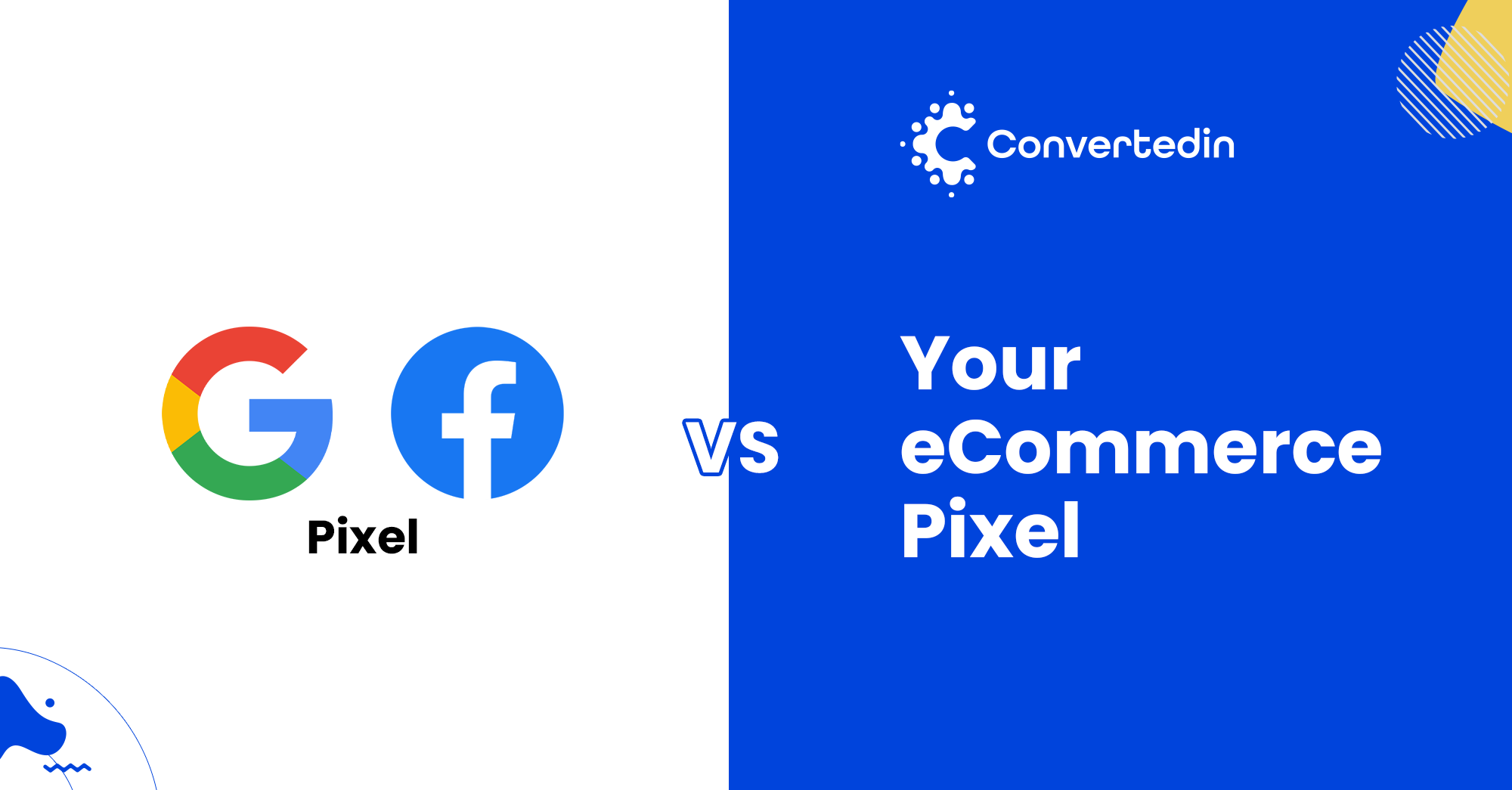Why Do You Need An E-commerce Pixel?

Scaling up your e-commerce business might be challenging, but it isn't impossible - trust me!
I know, I know, with the current competition, it seems harder for you, especially with the prominent e-commerce names available in the market nowadays.
But how do you think these big names made it in the first place?
Well, we have got the answer to this question for you. In the following blog post, we will provide you with one of the keys to the growth of these top e-commerce companies.
Ready to join them?
If you’re, then we would be happy to help - fill the form by the end of the blog to request a demo with one of our experts.
In this article, we're going to discuss:
- The Secret Formula of Leading E-commerce Businesses
- Frontend vs. Transactional Data: Why Do You Need an E-commerce Pixel?
- Difference Between Facebook & Google Pixel and E-commerce Pixel
- How to Build an E-commerce Pixel?
- Request a Demo!
The Secret Formula of Leading E-commerce Businesses
Any business needs a lot of investment, time, effort, and money - and you might have all of these, but maybe you are missing out on one crucial factor: "data."
Customer data is one of the secret ingredients for any e-commerce business. You might have it, but you are not managing and using it well if your e-commerce business is still struggling.
Take the top e-commerce companies, for example; they use frontend and transactional data together to launch successful personalized marketing campaigns.
Frontend vs. Transactional Data: Why Do You Need an E-commerce Pixel?
Frontend data refers to the user interface part, where your customer opens your website, signs in with their contact information, goes to a category page, then a product page, adds a product to their cart, then checkout.
On the other hand, transactional data provides complete profiles of your shoppers, including names, mobile numbers, emails, purchasing activities, interactions with your customer service representatives, and more.
Unfortunately, you only have the transactional data part, not the frontend one, representing a massive hindrance to your business' growth.
That is why you need to connect both data types as the leading e-commerce companies do.
Hence, the need to have your own "e-commerce pixel."
An e-commerce pixel is a code you embed in your website to track customers' movements and behaviors. For example, where they are coming from, which page they are going to on your website, which page they bounce out the most from, etc.
The bottom line is that it helps you merge your frontend data with the transactional one.
Difference Between Facebook & Google Pixel and E-commerce Pixel
At this point in the blog, you must be asking yourself:
How is Facebook or Google pixel different from an e-commerce pixel? And which one to choose?
I am glad that you have asked!
As for the first part of the question, let us start with Facebook and Google pixels:
- A Facebook or Google pixel enables you to show targeted ads to users who visited your website before.
- You can create lookalike audiences using Facebook or Google pixel data.
- It will help you measure the effectiveness of your ad campaigns when it comes to your e-commerce store, such as the number of page views, the number of products added to the cart, etc.
- So, yes, the good part is that Facebook and Google collect data, but the bad part is that you won't have access to it - sorry!
- Also, after 180 days, the data will no longer exist, and you won't be able to use it anymore for marketing activities, like launching targeting or retargeting campaigns.
- Moreover, you can't use Facebook and Google for SMS and email marketing, only for advertisements, which is a massive downside since SMS and email marketing can significantly and positively impact your ROI (Return On Investment).
As for the e-commerce pixel:
Even though the e-commerce pixel is somehow similar to Facebook and Google pixels, they are still different. Here is why:
- First and foremost, an e-commerce pixel helps you connect your frontend and transactional data.
- After it collects the data, it gives you a complete view of your customers anytime you want and in real-time.
- Thanks to the data it collects, it enables you to understand customers better, build a long-term relationship with them, launch customized marketing campaigns, deliver personalized experiences, boost your ROI, and eventually scale up your business.
- Furthermore, an e-commerce pixel will help you perform any marketing activity - again, thanks to its data - whether it is launching ad campaigns or performing SMS and email marketing.
Now, on to another important question:
How to Build an E-commerce Pixel?
Building your e-commerce pixel means you need a big budget to support having a complete team of developers like Frontend Developer, Backend Developer, etc. Also, you will need a CTO (Chief Technology Officer) to lead the team.
But why complicate the process? Why do you have to go through all of this unnecessary hassle?
With an e-commerce pixel like Convertedin pixel, it can manage all of these and do the tech part of the job for you.
With Convertedin pixel, you can:
- Have all your data unified in one dashboard, like customer segments, customer data, audiences, store products, marketing campaigns performances, etc.
- Easily track these data and insights and compare them against each other.
- Use it not only for ads automation but also for SMS and email automation.
- Moreover, the Convertedin pixel can help you make intelligent data-based product suggestions to your customers, thanks to its robust product recommendation engine. The engine can recommend the most frequently bought together products, trending products, or related products to your customers, etc.
Furthermore, the Convertedin pixel has proven to:
- Increase customer retention, Customer Lifetime Value (CLV), and Average Order Value (AOV).
- Improve your Return On Investment (ROI), Return On Ad Spend (ROAS).
- Reduce your average customer acquisition cost.
And so many more.
So, are you ready to start scaling up your business with Convertedin?
Request a Demo Today!
%20Strategies.webp)
